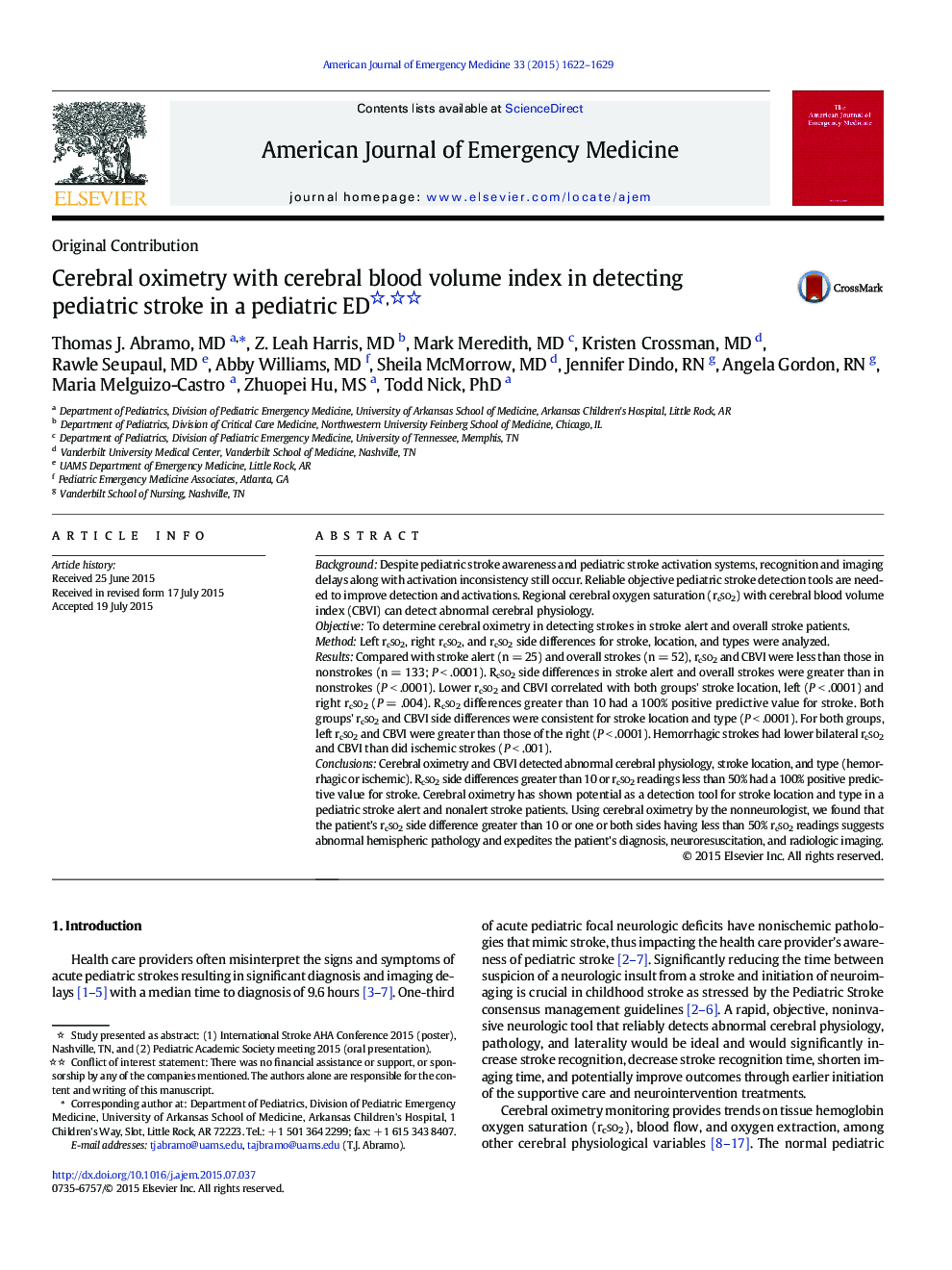| کد مقاله | کد نشریه | سال انتشار | مقاله انگلیسی | نسخه تمام متن |
|---|---|---|---|---|
| 3223648 | 1588100 | 2015 | 8 صفحه PDF | دانلود رایگان |
BackgroundDespite pediatric stroke awareness and pediatric stroke activation systems, recognition and imaging delays along with activation inconsistency still occur. Reliable objective pediatric stroke detection tools are needed to improve detection and activations. Regional cerebral oxygen saturation (rcso2) with cerebral blood volume index (CBVI) can detect abnormal cerebral physiology.ObjectiveTo determine cerebral oximetry in detecting strokes in stroke alert and overall stroke patients.MethodLeft rcso2, right rcso2, and rcso2 side differences for stroke, location, and types were analyzed.ResultsCompared with stroke alert (n = 25) and overall strokes (n = 52), rcso2 and CBVI were less than those in nonstrokes (n = 133; P < .0001). Rcso2 side differences in stroke alert and overall strokes were greater than in nonstrokes (P < .0001). Lower rcso2 and CBVI correlated with both groups' stroke location, left (P < .0001) and right rcso2 (P = .004). Rcso2 differences greater than 10 had a 100% positive predictive value for stroke. Both groups' rcso2 and CBVI side differences were consistent for stroke location and type (P < .0001). For both groups, left rcso2 and CBVI were greater than those of the right (P < .0001). Hemorrhagic strokes had lower bilateral rcso2 and CBVI than did ischemic strokes (P < .001).ConclusionsCerebral oximetry and CBVI detected abnormal cerebral physiology, stroke location, and type (hemorrhagic or ischemic). Rcso2 side differences greater than 10 or rcso2 readings less than 50% had a 100% positive predictive value for stroke. Cerebral oximetry has shown potential as a detection tool for stroke location and type in a pediatric stroke alert and nonalert stroke patients. Using cerebral oximetry by the nonneurologist, we found that the patient's rcso2 side difference greater than 10 or one or both sides having less than 50% rcso2 readings suggests abnormal hemispheric pathology and expedites the patient's diagnosis, neuroresuscitation, and radiologic imaging.
Journal: The American Journal of Emergency Medicine - Volume 33, Issue 11, November 2015, Pages 1622–1629
